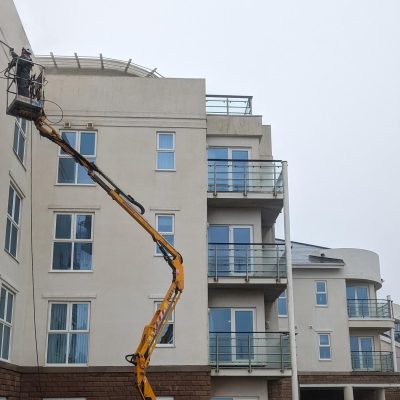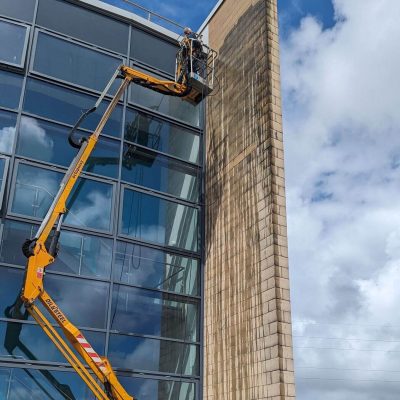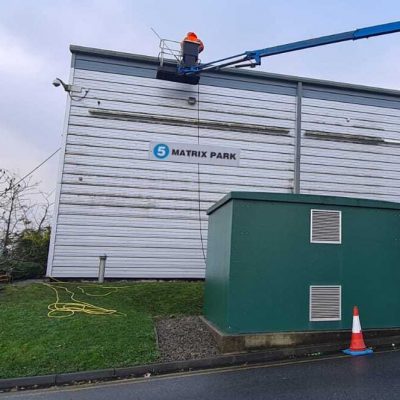If you work in the construction industry, you have probably heard of the term “MEWP”. But what does it mean?
In this blog post, we will explain what MEWP stands for, and we’ll discuss a bit about MEWP.
MEWP is an acronym for Mobile Elevating Work Platform. It refers to a type of equipment that allows workers to access high or hard-to-reach areas, such as roofs, ceilings, windows, or pipes. MEWP is also known as Aerial Work Platforms (AWPs).
Types of MEWPs
There are two main categories of MEWPs: Static and Mobile.
- Static MEWPs are fixed to the ground or a structure and can only move vertically.
- Mobile MEWPs can move horizontally as well as vertically and can be driven or towed to different locations.
Within these categories, there are different types of MEWPs that vary in size, shape, and functionality. Some of the most common types are:
Scissor lift:
A static or mobile MEWP that consists of a platform supported by criss-crossing metal arms that extend and retract like scissors. Scissor lifts can only move up and down and have a large working area.
Scissor lifts are commonly used in construction and maintenance work, as well as in other industries where there is a need to reach high or hard-to-reach places.
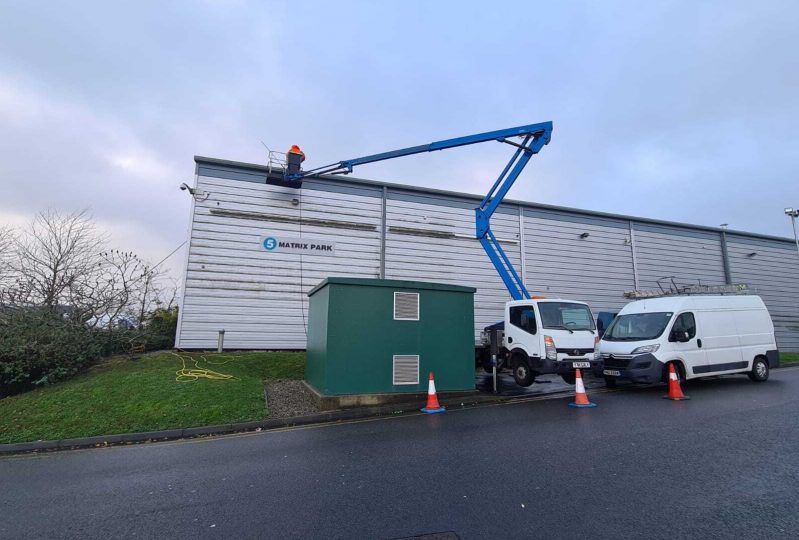
Boom lift:
A mobile MEWP consists of a platform attached to a long arm that can extend, bend, and rotate in different directions. Boom lifts can reach higher and further than scissor lifts and have a smaller working area.
Vertical mast lift:
A static or mobile MEWP that consists of a platform attached to a vertical mast that can extend and retract. Vertical mast lifts are similar to scissor lifts but have a smaller footprint and can fit in narrow spaces.
They are commonly used in warehousing and logistics environments, and are known for their ability to provide a stable and safe platform for workers to carry out tasks that require access to high or hard-to-reach places.
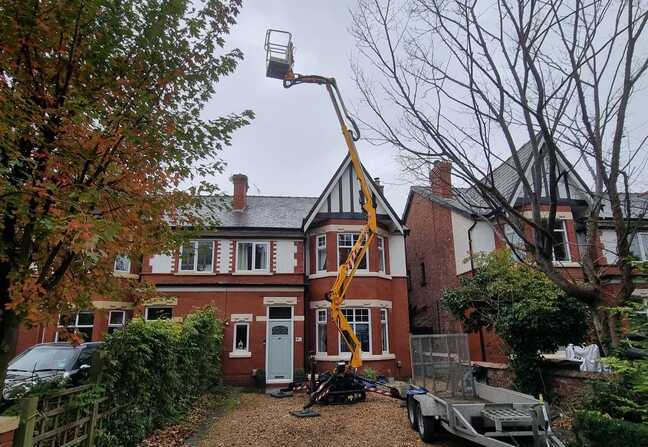
Spider lift:
A static MEWP that consists of a platform attached to a telescopic arm that can extend and bend in different directions. Spider lifts have legs that can be deployed to stabilise the machine on uneven surfaces.
Truck-mounted lift:
A mobile MEWP that consists of a platform attached to an arm that is mounted on a truck or a trailer. Truck-mounted lifts can be driven on public roads and can reach very high heights.
Applications of MEWPs
MEWPs are used in a variety of industries, and their applications vary depending on the specific needs of each industry. Here are some of the most common applications of MEWPs in different industries:
Construction industry
MEWPs are widely used in the construction industry to provide access to high or hard-to-reach places during construction projects. They are ideal for tasks such as installing fixtures or repairing roofs, and are known for their stability and ability to operate in tight spaces.
Maintenance work
MEWPs are also frequently used in maintenance work, such as HVAC maintenance, electrical work, and other types of repairs or maintenance that require access to elevated areas. They provide a safe and stable platform for workers to carry out their tasks, and are known for their ease of use and versatility.
Warehousing and logistics
MEWPs are commonly used in warehousing and logistics environments for tasks such as stacking and storing inventory, etc.
Other industries
MEWPs are also used in a variety of other industries, including film and television production, sports and entertainment, and event production. They provide a safe and stable platform for workers to carry out tasks that require access to elevated areas, and are known for their ease of use and adaptability.
Learn more about: What is Work at Height?
Safety considerations when using MEWPs
MEWPs are useful tools for various tasks that require working at height, such as painting, cleaning, inspecting, repairing, installing, or pruning. However, they also pose risks and challenges that need to be addressed before and during their use. Some of the main factors to consider are:
- Proper Training: Workers who operate mobile elevated work platform must have attended a training (IPAF training course) and have adequate certification to ensure they know how to use machines safely and correctly. They must also be familiar with the specific features and limitations of each type of MEWP they use.
- Common hazards: When using MEWP, there are several common hazards to be aware of, including electrical hazards, falls, and collisions. It’s important to be aware of these hazards and to take the necessary precautions to prevent accidents from happening.
- Inspection: MEWPs must be inspected regularly and maintained in good condition to prevent malfunctions or breakdowns. They must also be checked before each use to ensure they are suitable for the task and the environment.
- Planning: MEWP operators must plan ahead and assess the risks involved in each job. They must consider factors such as height, distance, weight, wind, weather, obstacles, power lines, ground conditions, traffic, pedestrians, and emergency procedures.
- Communication: Operators who’re going to be deployed must communicate effectively with each other and with other people on site. They must use clear signals, radios, or phones to coordinate their movements and actions. They must also report any problems or incidents as soon as possible.
Safety is of paramount importance when using MEWPs (Mobile Elevated Work Platforms). If safety is compromised then one might end up with injuries. According to HSE, “135 workers were killed in work-related accidents in 2022/23”. And here’s the IPAF global safety report.
Always make sure that the MEWP is in good working condition.
In the event of an emergency, remain calm and follow the emergency procedures for the MEWP. Remember to always keep in mind that safety should be the top priority when working with any type of machinery.

